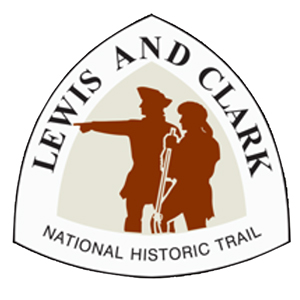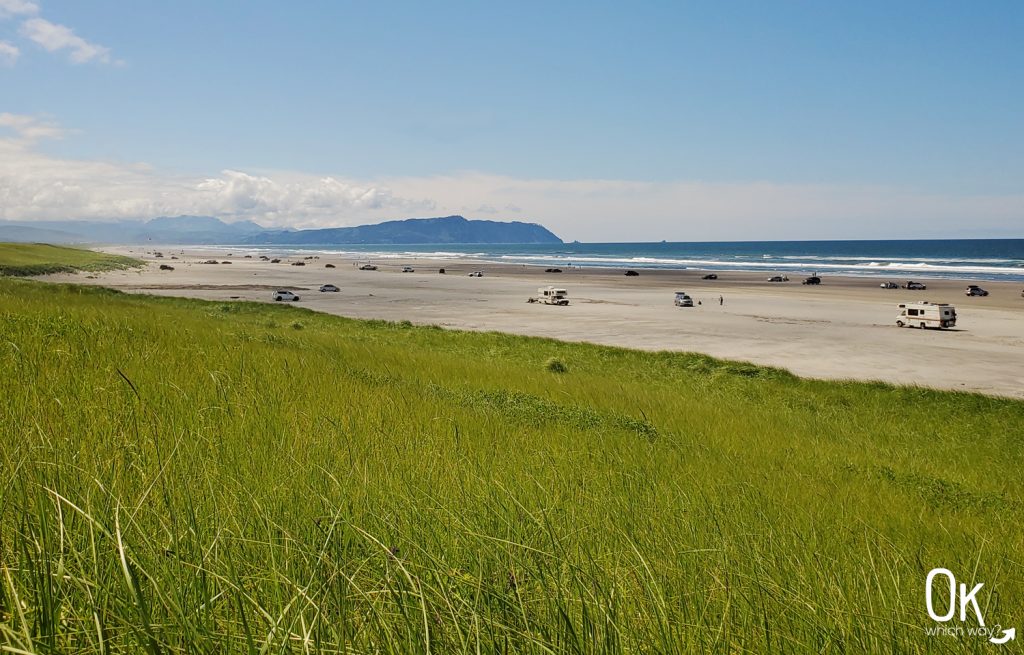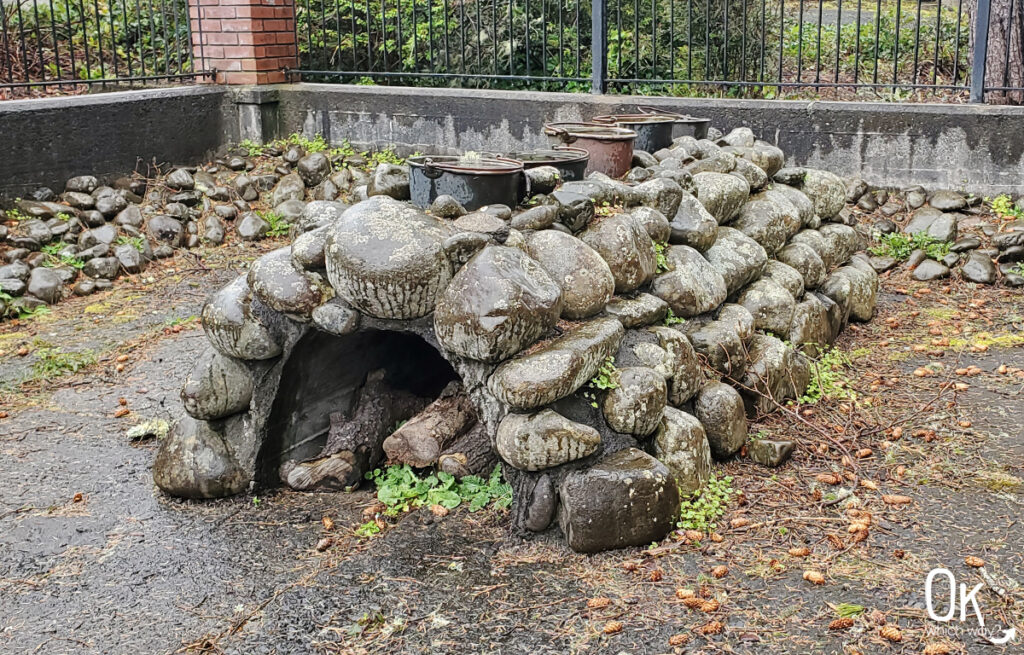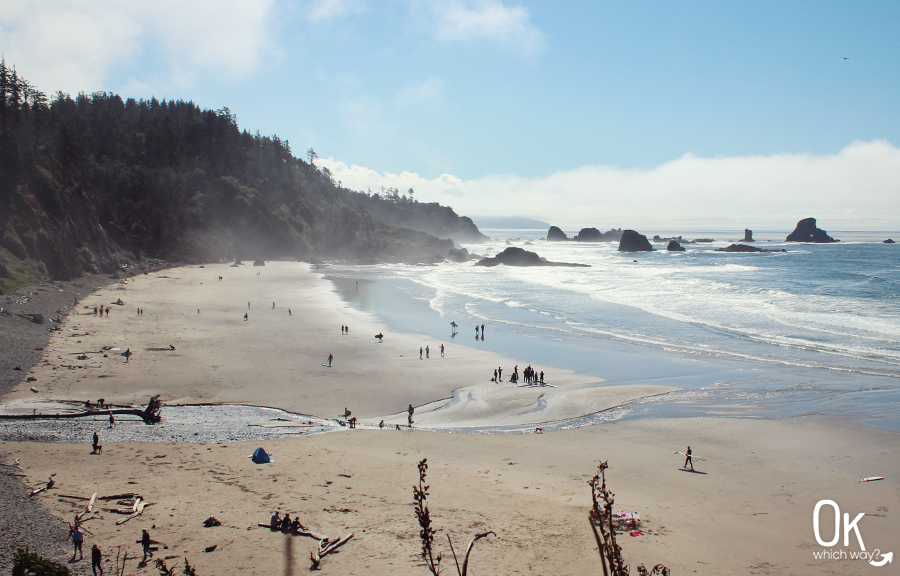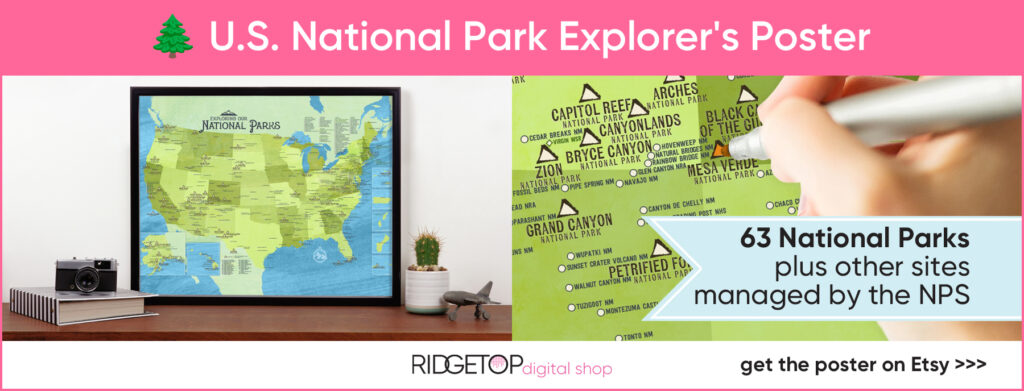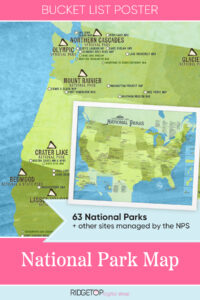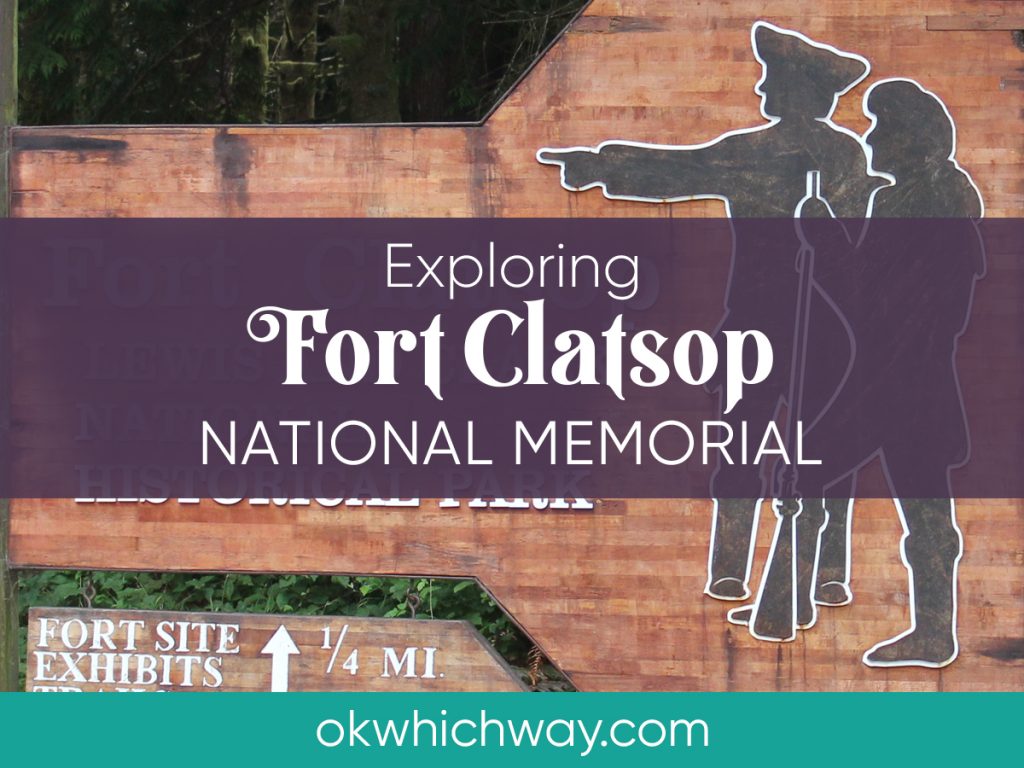
Exploring Fort Clatsop National Memorial
Fort Clatsop is located in northwestern Oregon, not far from the mouth of the Columbia River. The area was known as Fort Clatsop National Memorial until 2004 and is now part of The Lewis & Clark National Historical Park.
This post may contain affiliate links. When you make a purchase using one of these affiliate links, we get paid a small commission at no extra cost to you.
A year and a half after beginning their voyage in St. Louis, The Corps of Discovery finally reached their destination – the Pacific Ocean. The group spent the winter months, from December 1805 – March 1806, at Fort Clatsop.
There is a nice exhibit hall full of Lewis & Clark memorabilia, but the highlight of Fort Clatsop is the replica of the fort that the Corps of Discovery built & lived in during that rainy, stormy winter.
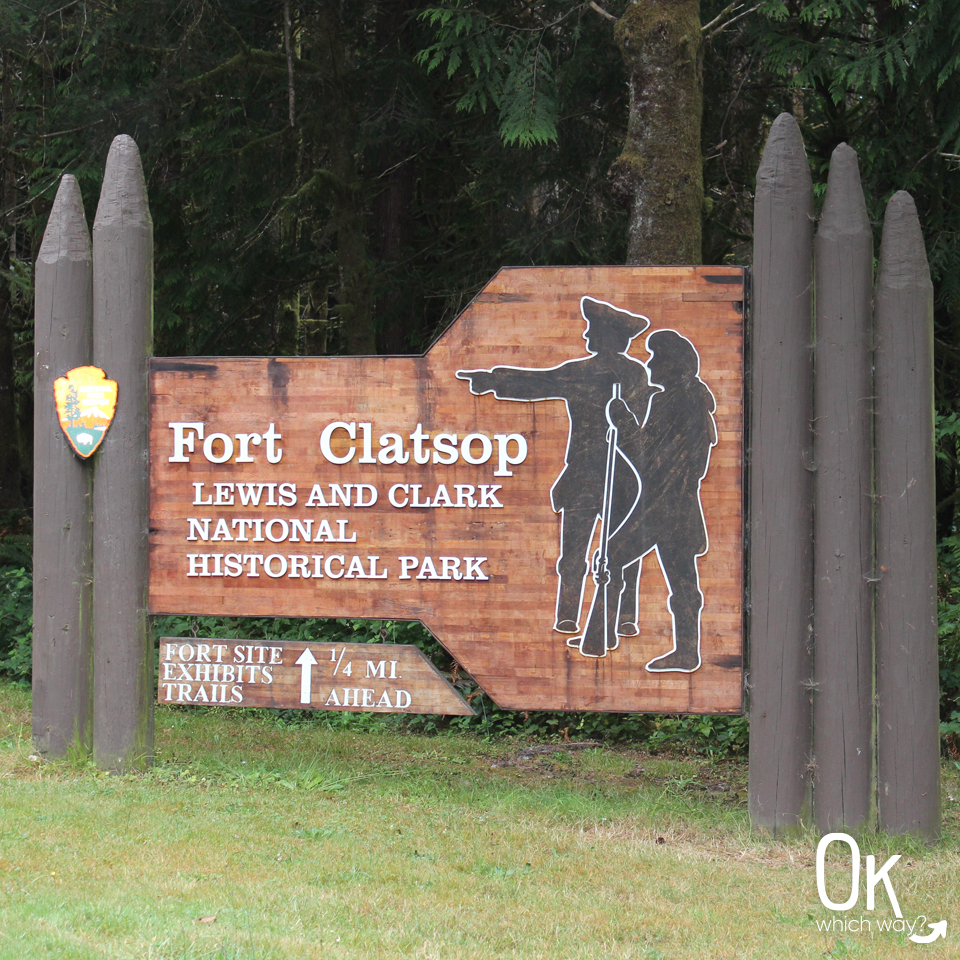
“Ocean in view! O! the joy.”
-William Clark
Park Info
Location: Northwest Oregon, near the mouth of the Columbia River.
Established: 1958
Elevation: Close to sea level
Things to See: Fort replica, exhibit hall, canoe landing
Things to Do: become a Junior Ranger, go for a hike through a beautiful PNW forest, kayak in the the Lewis & Clark River
Lodging/Camping: None
Food: None in the park, but plenty of options within 15 driving minutes
Dogs: Pets are allowed at Fort Clatsop, even on the trails. They are not, however, allowed inside the exhibit hall of the fort replica.
Entrance Fee: $10/person. The fee gets you into all the Lewis & Clark Historical Parks, not just Fort Clatsop click here to see current fee pricing
Exhibit Hall
The park has a great exhibit hall with tons of information about local Native American tribes and The Corps of Discovery. Because it’s a National Park you can stamp your passport here and earn a Junior Ranger badge.
Chinook Canoe
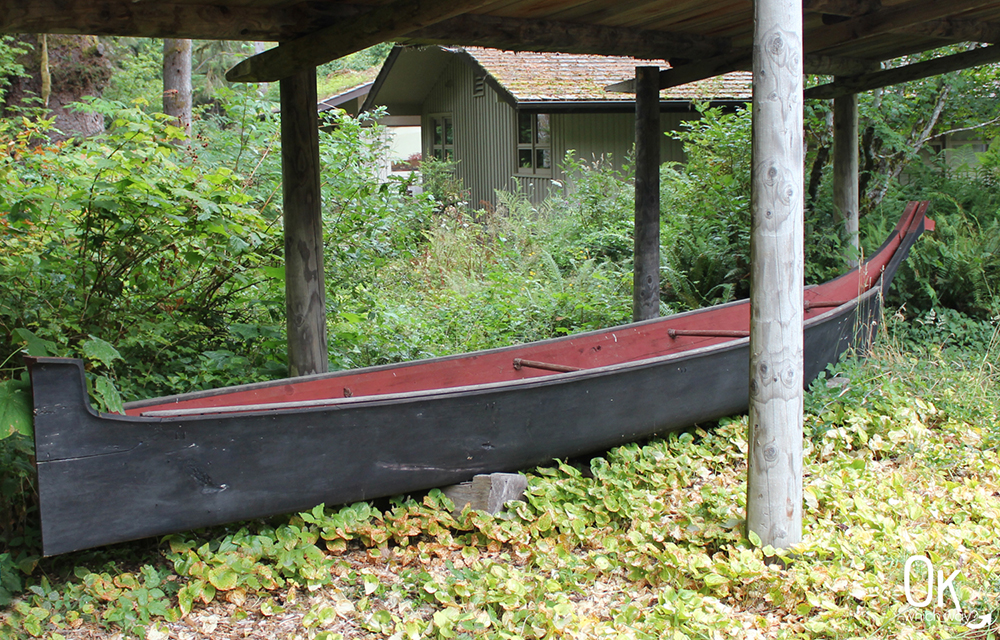
Map
A large map showing the journey of the Corps of Discovery.
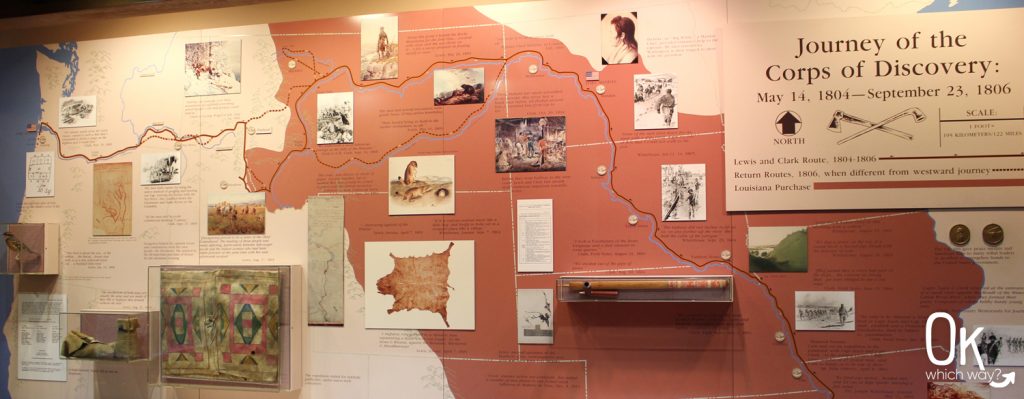
Arrival
The sculpture titled Arrival, by Stanley Wanlass, depicts Meriweather Lewis, a local Clatsop Indian with a fish, William Clark sketching the fish, and Lewis’ dog, Seaman. When my kids were little we used to love the book Seaman’s Journal, telling the story from the Newfoundland’s point of view.
In Quest of the Whale
There is a lovely diorama telling the story of Clark and a small group trekking 25 miles to the beach (now known as Cannon Beach) to find a reported stranded whale. By the time they arrived only the skeleton was left. The locals had already gotten to it. Clark was able to trade for some much needed blubber and oil.
Plants of Fort Clatsop
Part of Lewis & Clark’s job description was to journal about various plants & animals along their journey. There is a ton of interesting information in those journals. Within the visitor center is a collection of pressed plants and the remarks from their journal. This deer fern’s journal entry dated February 2, 1806 says, “The small fern also rises with a common footstalk from the radisc and are from four to eight in number, about 8 inches long…”
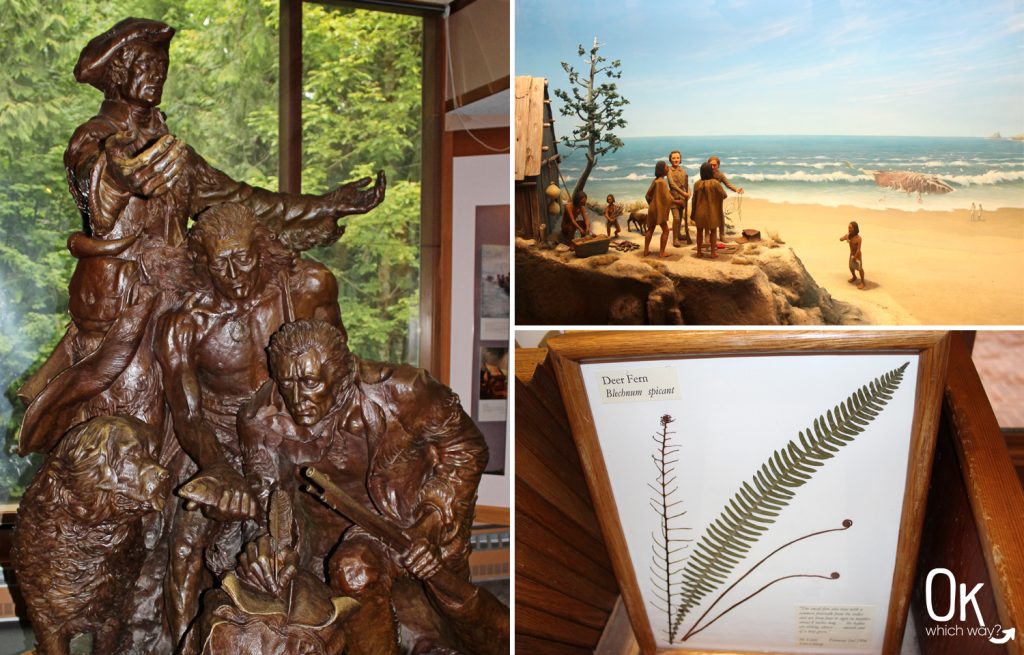
Interpretive Trail to the Fort
Sacagawea & baby, Jean Baptiste
Along the trail through the old growth forest is a bronze statue of Sacagawea. She was an invaluable member of the Lewis and Clark expedition using her knowledge to communicate with Native Americans and navigate rough terrain.
Wapato
Throughout the park are small signs naming plants that were “discovered” by Lewis and Clark. Each sign has a short excerpt about the plant from their journals. This one written by Captain Clark on November 22, 1805 says… “we purchased a fiew Wappato roots… those roots are equal to the Irish potato, and is a tolerable substitute for bread.”
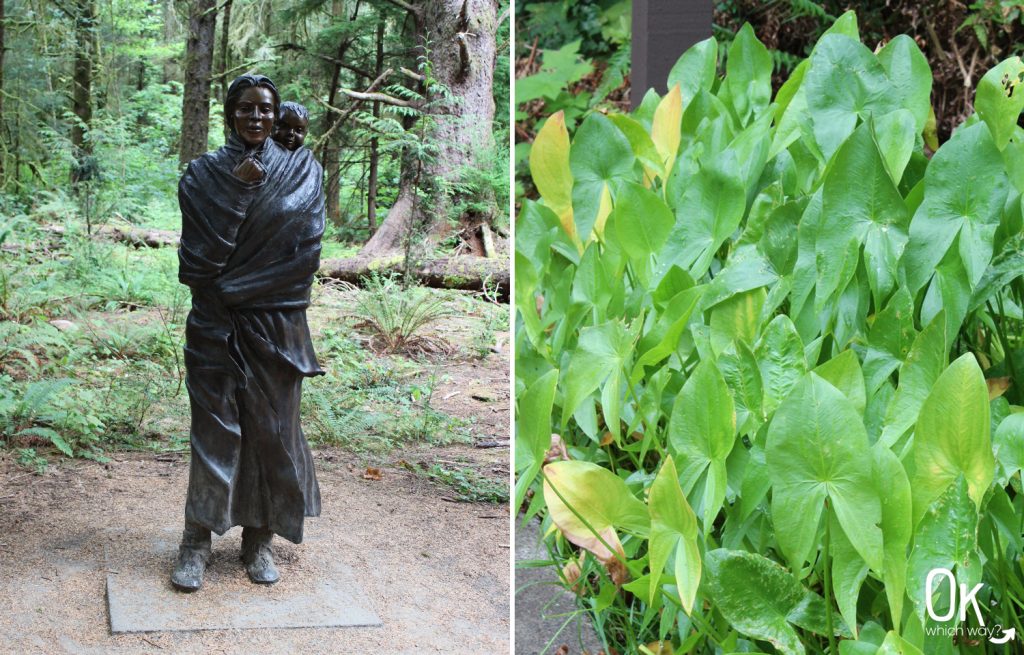
Demonstrations near the Fort
Throughout the summer demonstrations are held at Fort Clatsop showing life from the Lewis & Clark era.
Hide Tanning
There was a man showing how they turned animal skin into clothes. It is quite a process.
Tools
Traditional Native American tools made from animal bones.
Sinew
That raw looking stuff is sinew. Sinew is animal tendons that Native Americans used as thread.
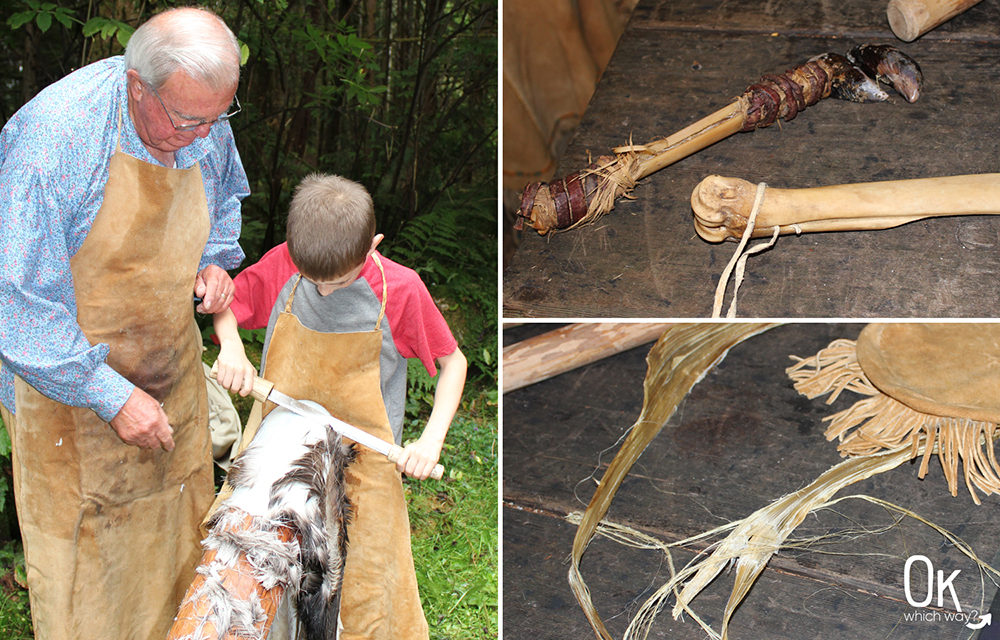
Fort Clatsop Replica
On December 8, 1805, the construction of the fort had begun. By the new year, the travelers temporary home was complete. They named it Fort Clatsop for the local Native American tribe who had been kind to them.
It wasn’t very big for a group of 33. The journals indicate expedition members were cranky at times, in part due to the small shelter.
As spring was coming, the hunters had a difficult time getting enough meat. Plus, all the rain was miserable. The group was at the fort for 106 days. It rained 94 of them. The group was ready to head back east. So, on March 23, 1806 they presented the Fort to the Clatsop Chief and the expedition headed up the Columbia River in their canoes towards home.
The original structure slowly rotted away due to the wet climate. A replica was built in 1955. Unfortunately, it was damaged by a fire in 2005. The current fort we get to explore was built in 2006.
The fort is open to explore on your own, which I love. We are a curious bunch and spend a lot of time looking at all the things. Certain times of year, guided tours are also offered.
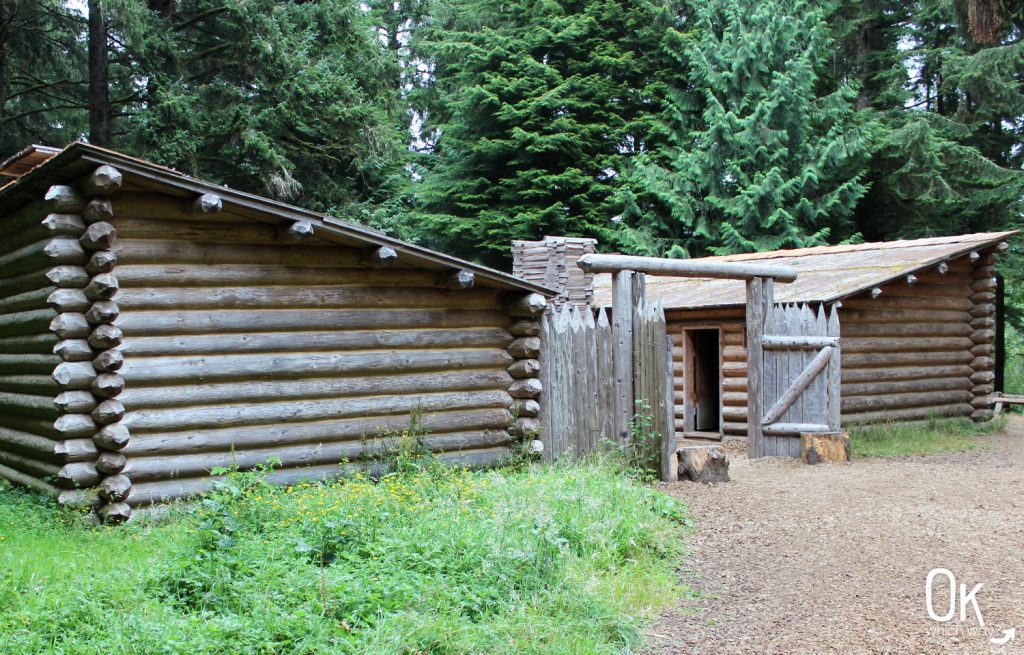
Captain’s Quarters
Lewis & Clark shared a room. One side seemed to be their living area with a fireplace, table & a couple cabinets. The other side of the room served as a sleeping area.
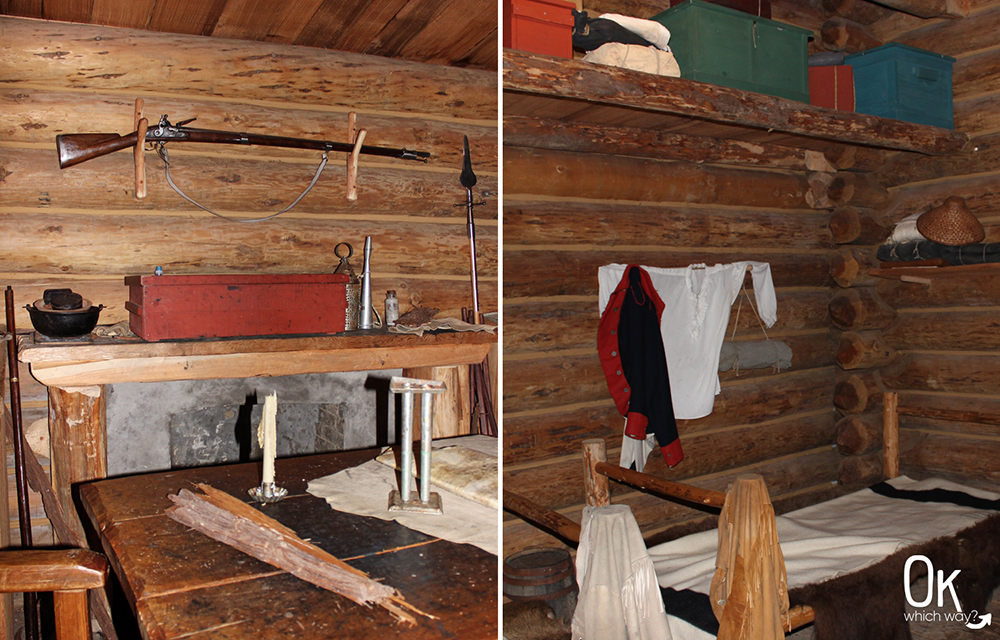
Sacagawea’s Room
Sacagawea, her husband, and baby stayed in this room. My boys were impressed that a bear skin was large enough to fill the entire bed. They weren’t as impressed with the baby carrier when I showed it to them.
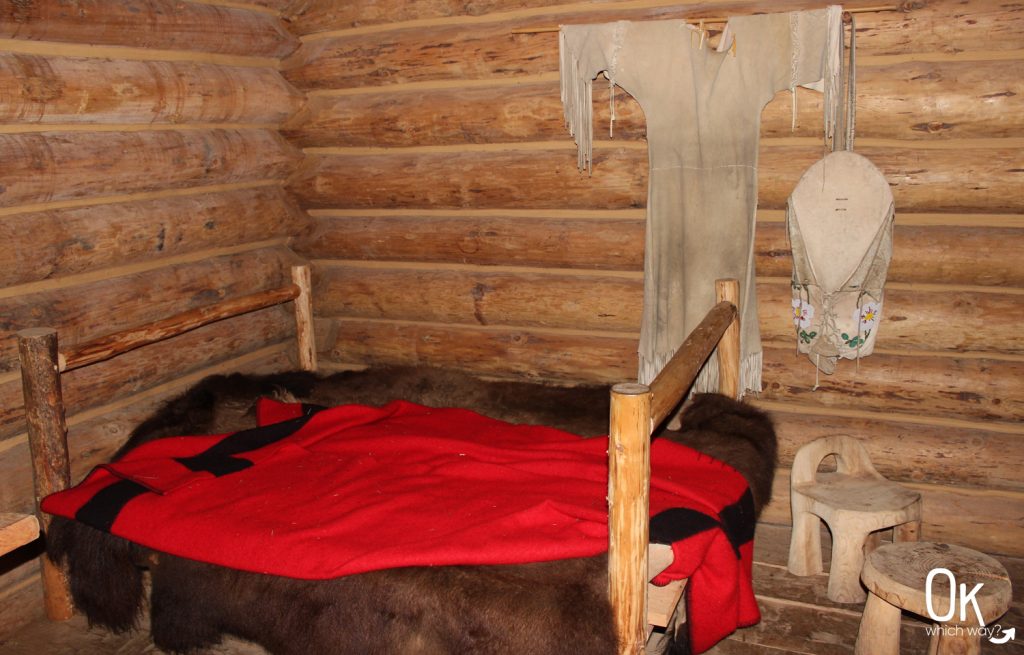
Cramped Quarters
The enlisted men shared three rooms on the other side of the fort. These rooms had four sets of bunk beds, a fireplace and table and chairs in the middle. The Corps of Discovery had 3 squads, each led by a Sergeant. The squads each had 7 – 9 Privates. I’m guessing each squad had their own room. Sounds like cramped quarters.

Thinking about Going for a Hike?
The Fort to Sea Trail is a good one. It follows the route Lewis & Clark could have taken to reach the Pacific Ocean from the fort. It’s a long hike, but it meanders from Fort Clatsop, through a variety of habitats, and ends at the Pacific Ocean. It’s worth it if you have the time.
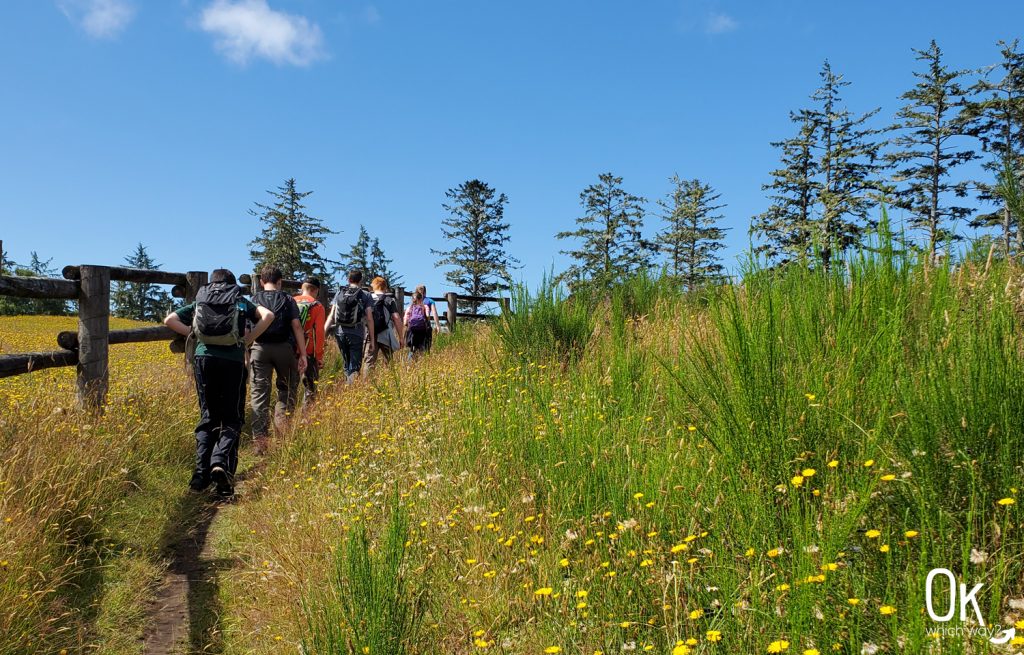
Looking for a place to camp near Fort Clatsop?
I highly recommend the campground at Fort Stevens State Park.
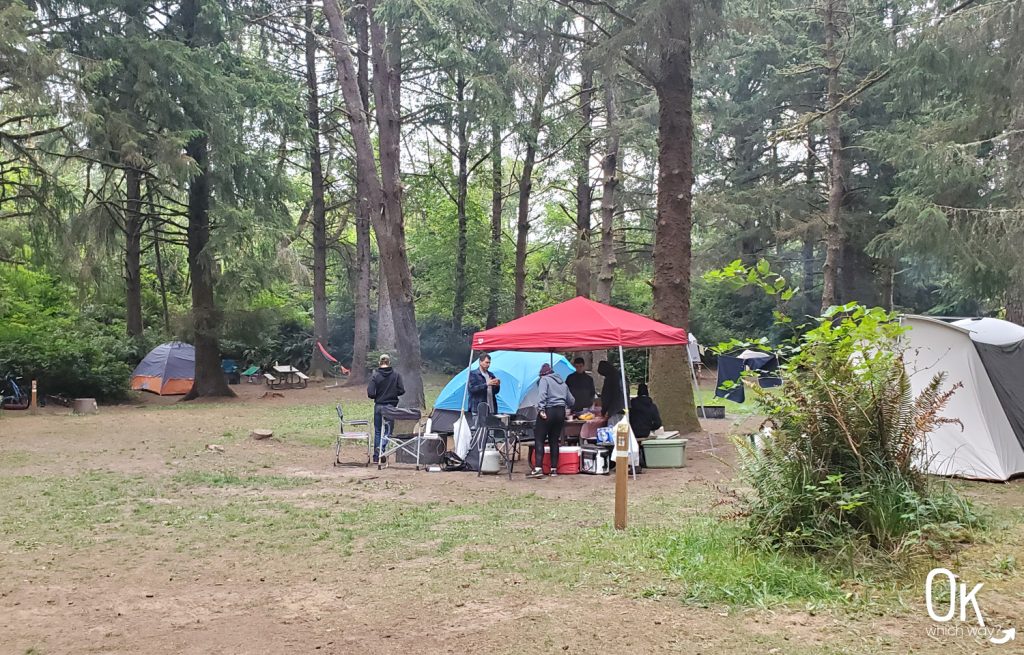
Thinking About Exploring Fort Clatsop?
Pin This to Help Plan Your Trip ⬇

More Lewis & Clark Sites

